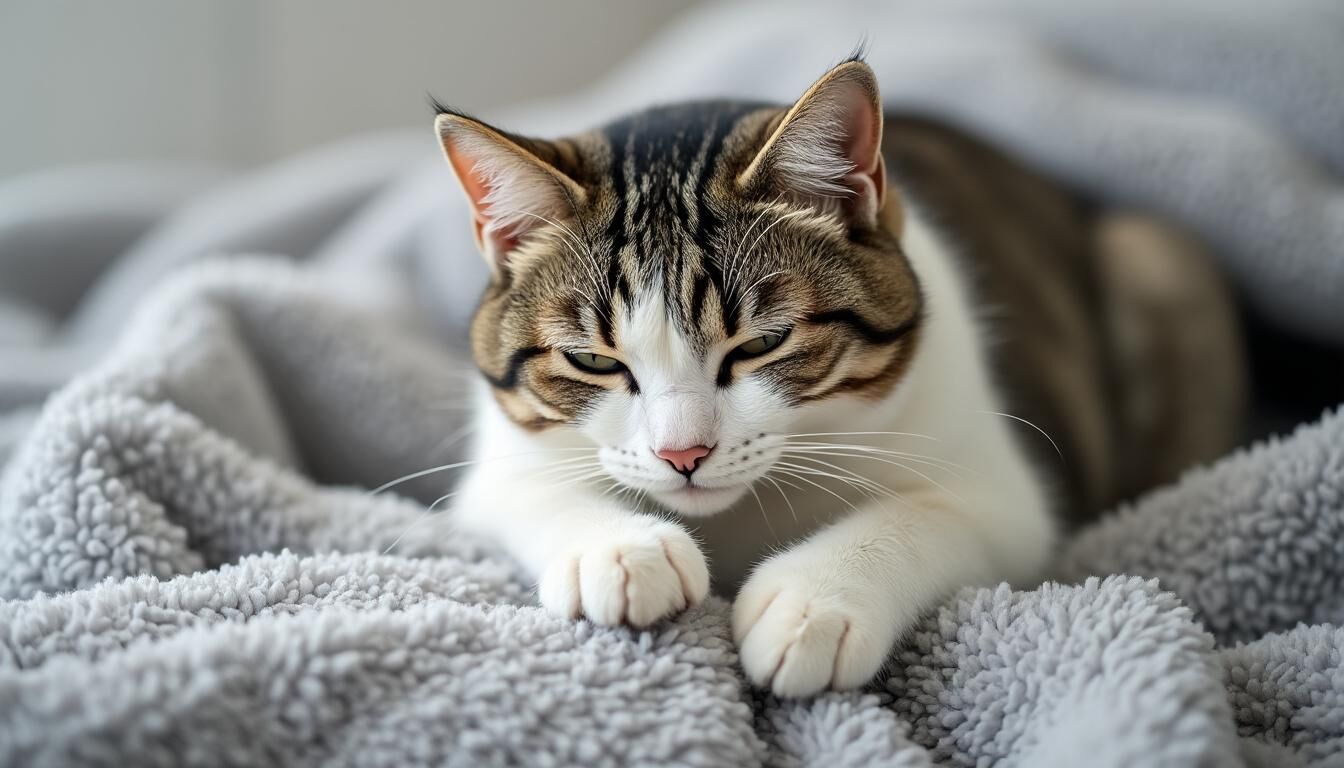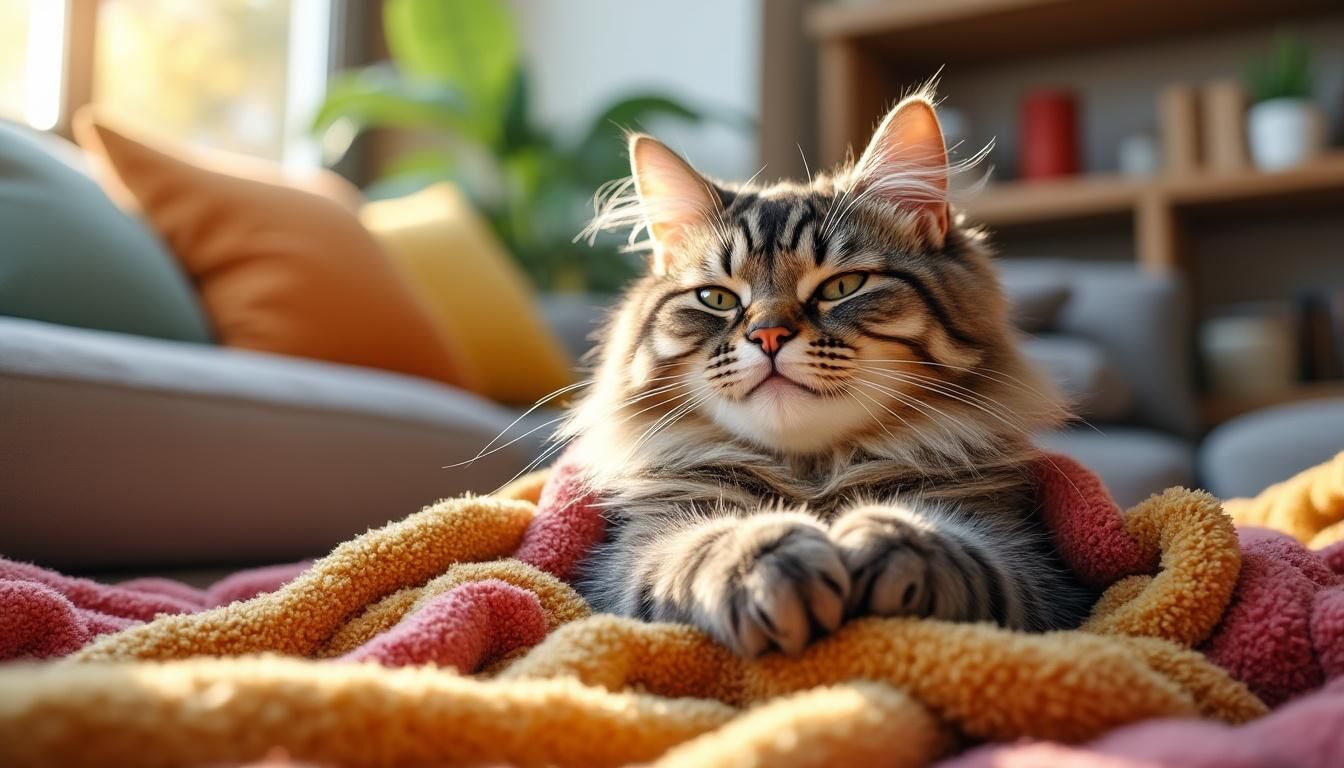Ever noticed your feline friend rhythmically pressing their paws against a blanket or even your lap, instantly melting your heart? This peculiar behavior, commonly known as cat kneading, is much more than innocent fluffiness. In fact, it’s a fascinating blend of instinct, communication, and comfort that ties domestic cats to their wild ancestors. From the early days of kittenhood to adult cats seeking reassurance, kneading is an enduring behavior rich in meaning.
Visualizing this motion as “making biscuits” or “kneading dough” paints the perfect picture: the cat alternates pressing and releasing its paws in a slow, steady rhythm. This action, widespread and innate, connects deeply to survival and emotional comfort. Understanding why cats engage in this behavior helps owners appreciate an essential part of the feline language, revealing how these tender paw motions reflect a blend of territorial marking, affectionate bonding, and soothing self-care.
Why Do Cats Knead? Understanding the Instinctive ‘Making Biscuits’ Behavior
What Is Cat Kneading? Visualizing the Adorable Paws At Work
The Rhythmic Motion: ‘Kneading Dough’ and ‘Making Biscuits’
When cats “knead,” they press their paws alternately against a soft surface, much like a baker kneading dough or making biscuits 🍪. This repetitive, rhythmic motion involves pushing in and out, often accompanied by a slight stretching of their bodies. The action is not only endearing but also very deliberate—cats use all four paws for this task, sometimes even extending their claws gently into the fabric or surface beneath.
Unlike random paw tapping, the kneading movement is:
-
Slow and rhythmic 🐾
-
Alternating between left and right paws
-
Often combined with purring or relaxation postures
-
Sometimes producing drooling or gentle mewing
This clear pattern of behavior demonstrates the strong instinctual roots of cat kneading, which is observed across breeds and ages. Such consistency suggests it serves fundamental feline needs rather than random habit.
How Common and Innate Is Kneading Among Domestic Cats?
Kneading is one of the most widespread behaviors seen in cats, spanning both household felines and wild cousins. Research indicates that nearly all domestic cats display this behavior at some point in their lives. Such universality points directly to its innate nature, embedded deep within feline instincts.
Whether it’s a Scottish Fold or a Maine Coon, short-haired or long-haired, young or old, the urge to knead appears naturally, irrespective of environmental factors.
Common features of cat kneading include:
-
Appearing when cats are settling down or showing contentment 💤
-
Frequently directed toward soft blankets, cushions, or their human companions
-
Repeated throughout life, not limited to early kittenhood
Tracing Cat Kneading Back to Kittenhood: Roots in Nursing
Stimulating Milk Flow: Kittens and Their Mothers
The origins of kneading trace back to kittens nursing from their mother. As newborns, kittens knead their mother’s belly to stimulate milk flow, using their paws to rhythmically massage essential milk glands. This calming behavior:
-
Ensures nourishment by encouraging milk production 🍼
-
Creates a tactile connection between kitten and mother
-
Establishes early comfort and security during vulnerable stages
This early-life interaction imprints a lasting memory, meaning cat kneading is intricately bound to nourishment and care — not just a quirky habit picked up randomly.
From Kitten to Adult: Why Cats Keep Kneading
Even after weaning, many cats continue kneading well into adulthood. The behavior transitions from a practical nursing reflex to an expression of comfort and relaxation. Studies have linked this to the release of oxytocin, often dubbed the “cuddle hormone,” which strengthens the bond between mother and kitten.
In adults, kneading often:
-
Evokes a sense of well-being and security ✅
-
Can accompany purring and relaxed body language
-
Might include drooling, a throwback to kittenhood suckling
This hormonal and behavioral carryover enhances cats’ emotional health, explaining why your adult cat might still give you those tender paws now and then.
What Does It Mean When a Cat Kneads? Signs and Signals
Drooling and Oxytocin Release: The Comfort Connection
A unique part of kneading is the occasional drooling cats exhibit. This seemingly odd yet adorable trait appears because kneading triggers the release of oxytocin and other comfort-related hormones, reminiscent of nursing. Drooling during kneading signals:
-
Emotional relaxation and nostalgia
-
A deep-rooted association with safety and affection 🥰
-
Physical comfort blending with emotional satisfaction
Rather than simply a random physical act, drooling-rich kneading indicates your cat is entering a relaxed, contented emotional state while feeling secure.
A Sign of Contentment or Something More?
While kneading is mostly a sign of contentment and pleasure, it can have other messages, too. In some cases, cats use kneading to communicate temporary anxiety relief or to signal attachment to their owners. However, intense or aggressive kneading may hint at overstimulation or stress, so context matters.
|
Type of Kneading |
Possible Meaning |
Behavioral Cues |
|---|---|---|
|
Slow & gentle 🐾 |
Relaxation and comfort |
Closed eyes, purring, relaxed body |
|
Intense & fast 🐱 |
Anxiety or overstimulation |
Tail twitching, ear flicking, vocalizing |
|
Mixed with biting or scratching 😾 |
Aggression or discomfort |
Hissing, growling, pulling away |
The Multiple Purposes of Cat Kneading: Comfort, Marking & Bonding
How Kneading Helps Cats Mark Territory and Establish Safety
Depositing Pheromones: Scent Glands in a Cat’s Paws
Cats possess scent glands located in the pads of their paws, which release unique pheromones when pressed against surfaces. Through kneading, felines actively mark territory — but not in a hostile way. This gentle marking reassures cats by applying their own familiar scent to preferred resting spots or objects.
The benefits of this behavior include:
-
Establishing a secure area imbued with their scent 🏠
-
Detering unfamiliar cats or intruders
-
Signaling comfort zones within multi-cat households
By combining tactile kneading with scent deposition, cats exert a subtle but powerful claim to their surroundings.
Preparing Resting Spots: Instinctive Tamping Down
Beyond marking territory, kneading serves a practical purpose: preparing restful places. Cats instinctively use their paws to tamp down bedding, grass, or blankets before curling up. This behavior echoes survival instincts from wild ancestors, who padded down grass or leaves to create a safe, comfortable nest.
|
Purpose of Kneading |
Function |
Benefit to Cats |
|---|---|---|
|
Marking territory with scent 🐾 |
Pheromone deposition from scent glands |
Creates sense of ownership and safety |
|
Preparing resting place 🛏️ |
Flattening and softening bedding |
Improves comfort and reduces threats |
Kneading as a Social Behavior: Strengthening Cat-Human Bonds
Why Your Cat Kneads You: Trust, Affection, and Love
When a cat kneads its human, it’s a profound act of affection and trust. Cats are vulnerable during kneading, exposing sensitive paws and focusing closely on the chosen surface — in this case, often their beloved owner. This intimate behavior signals:
-
Acceptance and comfort in your presence ❤️
-
Reinforcement of social bonds between feline and human
-
An invitation to mutual relaxation and affection
Recognizing kneading as a loving gesture helps deepen the emotional connection shared between cats and their caregivers. This heartfelt account documents how cats communicate affection well before parting, underscoring the emotional complexity behind such behavior.
Kneading Frequency: Personality, Upbringing, and Environment
The frequency and intensity of kneading vary widely among individual cats, influenced by factors including temperament, early experiences, and surroundings. For example:
-
Calm, relaxed cats may knead gently and often 💤
-
Nervous or anxious cats might knead excessively or sporadically 😰
-
Environmentally enriched cats tend to show balanced behavior
Understanding these differences can aid owners in tailoring care to their cat’s emotional needs.
Physical Benefits: Kneading as a Feline Stretching Routine
Mini Workouts: How Kneading Supports Muscle and Joint Health
Beyond emotional reasons, kneading also serves as a subtle exercise for muscles, tendons, and joints. Cats engage multiple muscle groups during kneading, stretching their limbs and flexing paws. It’s akin to feline yoga or a mini workout designed to:
-
Enhance flexibility and joint mobility 🧘
-
Stimulate blood flow and muscle tone
-
Maintain physical readiness, especially for less active cats
Regular kneading supports a cat’s overall wellbeing, contributing to their agility and comfort during movement.
Responding to Cat Kneading: Tips for Owners & When to Worry
Why Do Both Male and Female Cats Knead? Debunking Gender Myths
The Heat Effect: Why Female Cats in Estrus Knead More
Both male and female cats exhibit kneading, dispelling myths that it’s a gender-specific behavior. However, female cats in estrus (heat) may knead more frequently or intensely. This is thought to reflect increased tolerance and friendly behavior during these hormonal phases, enhancing social bonds and reducing stress.
-
Estrus increases affectionate and kneading behaviors 💕
-
Not exclusive to females; hormonal changes influence intensity
-
Males may respond to female signals with increased social behavior
Understanding Aggressive or Intense Kneading Episodes
Sometimes kneading can tip into aggressive or overly intense episodes, especially if the cat feels overstimulated or anxious. Indicators include rapid, hard pawing mixed with scratching, biting, or vocal protests. Awareness of these signs helps owners respond appropriately to prevent stress escalation.
How to Encourage Healthy Kneading Habits in Your Cat
Providing Soft Surfaces and Managing Claw Discomfort
Facilitating positive kneading experiences means offering cats cozy, soft surfaces like blankets or plush cat beds. Additionally, managing claws through regular trimming or soft claw caps minimizes discomfort to humans and damage to furniture. This thoughtful approach ensures kneading remains a pleasant experience for all parties.
-
Designate soft kneading zones 🛋️
-
Trim nails monthly or use claw covers
-
Monitor for signs of discomfort during kneading
Redirecting Without Punishing: Positive Reinforcement Tactics
Instead of discouraging kneading behavior through punishment, gentle redirection toward appropriate areas and positive reinforcement yield better outcomes. Reward cats with treats or affection when they knead their designated spots, strengthening favored behavior compassionately.
-
Use treats or praise to reward desired kneading spots 🎁
-
Redirect paws gently if kneading causes discomfort
-
Avoid punishment to prevent anxiety or confusion
When Should Excessive Kneading Worry You? Feline Health Insights
Recognizing Signs of Stress or Medical Issues Behind Kneading
Though mostly harmless, excessive or compulsive kneading can signal underlying concerns, such as stress, anxiety, or physical pain like arthritis. Watch for accompanying signs such as:
-
Change in appetite or litter habits 🚩
-
Visible discomfort or limping during kneading
-
Overly frantic or obsessive pressing
If such symptoms appear, a veterinary consultation is recommended to rule out medical issues.
|
Sign of Problem |
Indicator |
Recommended Action |
|---|---|---|
|
Stress-induced kneading 😿 |
Rapid, intense kneading with vocalizing |
Provide calm environment, consult behaviorist |
|
Medical pain or arthritis 🐈⚕️ |
Limping, discomfort during paw pressure |
Visit veterinarian for diagnosis and treatment |
|
Compulsive behavior 🔄 |
Non-stop kneading interfering with normal activities |
Behavioral therapy and vet evaluation |

FAQ
-
Why does my cat knead and purr at the same time? Cats often knead and purr together as both behaviors reflect relaxation and comfort. The rhythmic paw pressing and soft purring indicate your cat feels safe and content.
-
Is kneading harmful to humans? Typically, no. Kneading is gentle, but claws can occasionally scratch. Regular nail trimming and providing soft kneading surfaces help prevent discomfort.
-
Can kneading be a sign of anxiety? Yes, if kneading becomes frantic or aggressive, it might indicate stress or overstimulation. Observing other signs and consulting a vet can help determine if intervention is needed.
-
Do all cats knead with their front paws only? Generally, yes. Cats knead primarily with their front paws while anchored by their hind legs for balance during the motion.
-
How can I encourage my shy cat to knead on my lap? Try offering soft blankets and spending quiet time with your cat to build trust. Reward gentle kneading with treats and calm affection to foster the behavior.

